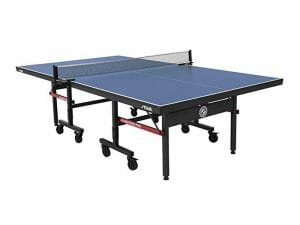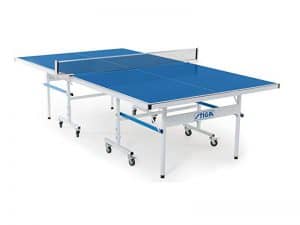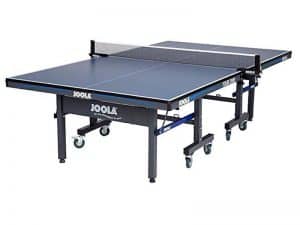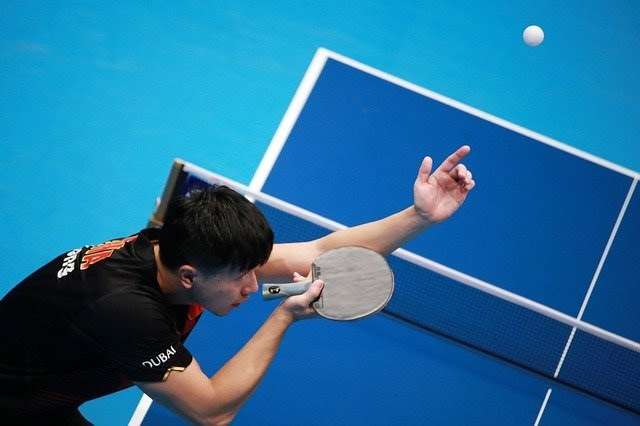5 Types Of Pool Games You Need To Try
- Eugene Sandoval
- Last updated
Pool, also known as billiards, is classified under cue sports. It involves a rectangular table with six pockets located along the rails, into which players must deposit billiard balls. If you’re into billiards, chances are you’re somewhat already familiar with the popular 8 ball pool game. But if you want to know more about this pool game, as well as other less-common versions of billiards, go ahead and continue reading to update your understanding of this cue game along with the unique sets of rules and fouls you need to follow for each variation.
8 Ball Pool
8 ball is evidently the most widespread pool game across the world. It’s also known to many as ‘stripes and solids’ because half of the numbered balls are a solid color while the rest of the balls have stripes on them. You can also find beginners playing 8-ball but unknowingly referring to it as ‘pool’.
This pool game is played with 16 numbered balls, where numbers 1 to 7 are solid in color and numbers 9 to 15 are stripped. Ball number 8 is black and sometimes it’s called blackball. There’s also a cue ball that’s typically white.
Rules and Objectives:
- All the balls are placed in a triangular rack and one player is chosen to shoot first. (Players can flip a coin for it or pick by any other means)
- If the first player fails to break the balls correctly, then the opponent may choose to continue playing from the current position or re-rack the balls to break again. (A proper break is to have at least 4 balls hit the rails)
- After the break, each player is assigned to a ball pattern, either solids or stripes.
- The goal of the game is to pocket all of your designated balls, then pot the 8-ball into a called pocket.
Fouls:
All of the following actions are considered fouls. When any of them happens, the opponent takes the turn after placing the ball on the table.
- The player fails to hit the ‘on’ ball.
- The cue ball is potted
- The cue ball doesn’t hit any object ball.
- The player knocks a ball off the table.
- No balls are pocketed on the break.
- The cue ball is hit more than once in a single shot.
9 Ball Pool
A contemporary adaptation of pool games, 9 ball pool is played with 10 numbered balls. Ball number 9 isn’t the shot ball, but you can pot any ball at any point during the game.
In 9 ball pool, the balls are placed in a rack shaped like a diamond. The colors of the balls don’t matter, neither do the patterns. The balls are numbered from 1 to 9, and there’s a white cue ball to complete the set.
Rules and Objectives:
- You can pocket any ball at any time of the game.
- Ball number 9 isn’t the call shot ball so it’s not played at the end of the game only. Instead, you can strike or pocket it earlier as well.
- The ball with the current lowest number on the table should come in contact with the cue ball at break out.
- In this case, the breaker player may call a push-out shot. (Push-out is a shot that you can play in any way you want. It won’t be considered a foul as long as the ball isn’t knocked off the table)
- If the current lowest number on the table does not come in contact with the cue ball, then the opposing player gets to call for a push-out shot.
- The winner is the player who pockets the 9-ball at any point during the game.
Fouls:
- The cue ball, as well as the object ball, are potted at the same time.
- If a player commits 3 fouls in a row, the opponent is declared the winner.
- The player causes any ball to jump off the table.
- The player knocks the ball number 9 off the table
Cutthroat Pool
Usually a 3-player or team game, Cutthroat pool is played by a standard set of 16 billiards. There are 15 numbered object balls and a white cue ball, the same set of pool balls used to play 8-pool.
The game gets its name in reference to having 3 or more players competing against each other, where each player fends for themselves.
Rules and Objectives:
- Typically, the 15 object balls are divided into 3 categories: low balls are numbered 1 to 5, mid balls are numbered 6 to 10, and high balls are numbered 11 to 15.
- Each player is assigned one of the sets. (The number of balls in each set and the number of sets can vary according to the number of players).
- The goal is to pocket all the balls of the other players, and the winner is the last player with at least one ball of their set remaining on the table.
- A player can even pocket their own ball so they can continue an extra turn in exchange for their currently weaker position. This is called cutting one’s own throat.
Fouls:
- The cue ball is pocketed or knocked off the table. This allows each of the fouling player’s opponents to reintroduce one of their pocketed balls back to the table, as long as these opponents were still “in” the game.
- Hitting the cue ball twice during the same shot.
- Hitting an object ball instead of the cue ball.
Bumper Pool
One of the most ambitious types of pool games, bumper pool isn’t played on a standard pool table like most of the other variations. Instead, a bumper pool table is octagonal or rectangular in shape. It has only two pockets located at the center of the two rails opposite to one another. The interior of the table is equipped with fixed padded obstacles called bumpers.
Typically, tables will have 12 bumpers, two at each pocket and the rest are arranged similar to a cross in the center of the table. One line of the cross is in line with the pockets.
Rules and Objectives:
- A game of bumper pool is played with 10 balls in total; 5 balls are red color and 5 balls are white color. There’s one market ball in each color set.
- At the start of the game, each set of balls is placed on 5 spots near each edge of the table by its one pocket. The marked ball is put right in front of the pocket.
- The goal is for a player to pot all of their balls into their designated pocket on the opposite side of the table before the opponent.
- The marked ball of a player must be potted before the same player gets to pocket another ball.
- There’s no specific cue ball involved in a bumper pool game; all balls can be pocketed.
Fouls:
- There’s no penalty if a player pots one of the opponent’s balls. But, this ball will be considered as potted regardless of the pocket it fell into.
- If a player pots one of their own balls in their own pocket, then the opponent gets to drop two of their own set of balls into their pocket.
- If a player pots their last ball in the wrong pocket, the opponent is declared the winner.
One Pocket Pool
Featured as the main game in the 2007 movie, Turn the River, one pocket is pretty much what the name suggests. In this pool game, each player chooses one pocket only to pot balls throughout the entire game.
Rules and Objectives:
- Each player (or team) gets to select one pocket only to play so that only two pockets of the pool table are being used during the game.
- Players can only pot balls in their designated pockets, unlike other pool games in which players can pot balls in any pocket of the pool table.
- You get one point for every ball you pot in your chosen pocket.
- The goal here is to score more points than your opponent, and the winner is the first player to score a certain number of points the players already agreed on (commonly 8 points).
- A player may shoot at any object ball no matter its color or number.
Fouls:
The penalties for any one of the following fouls are losing one point, re-spotting a pocketed ball (if possible), and getting a ball in hand if the cue ball is pocketed.
- The player pots a ball in the opponent’s designated pocket (opponent earns a point).
- The player pots a ball in any of the unused pockets (unless an object ball is potted into their own pocket).
- The cue ball is knocked off the table.
- If a player commits 3 fouls in a row, the opponent is declared the winner
Summing Up
Besides the above-mentioned types of pool games, did you know there are even more variations? Yes, pool games don’t stop here! Some other types include:
- Straight pool – also known as 14.1 and 14.1 continuous.
- Carom pool – also known as straight rail and carambole billiards.
- Snooker pool.
- English billiards.
- Bank pool.
Eugene (Gene) Sandoval has been one of those guys who spent too many hours around ping pong tables in high school. However, soon enough, Gene understood that there is more to ping pong than having fun. That is how he started a journey that made Eugene one of the experienced semi-professional ping pong players in the United States. As the founder of the PingPongRuler, Eugene spends most of his time surrounded by ping pong tables and research. He always has this knack for coming up with new ping pong strategies and telling the good and bad equipment apart.
-
Eugene Sandovalhttps://pingpongruler.com/author/admin/
-
Eugene Sandovalhttps://pingpongruler.com/author/admin/
-
Eugene Sandovalhttps://pingpongruler.com/author/admin/
-
Eugene Sandovalhttps://pingpongruler.com/author/admin/
Popular Products


Join our email list for exclusive reviews & the latest Ping Pong News
Sign up to our newsletter and stay up-to-date with the latest news in the ping pong world, and be the first to read our new product reviews. We promise, no spam















